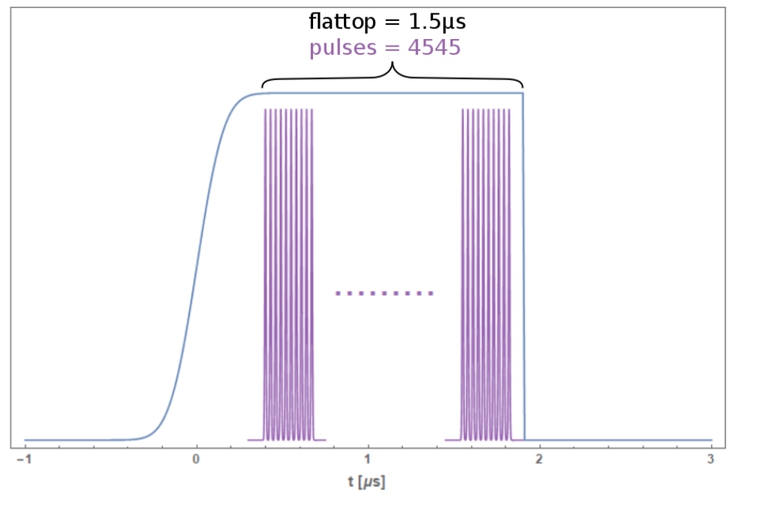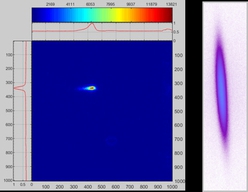Microbeam mode
Time resolved diffraction with relativistic electrons
Microbeam mode
To overcome the necessity of laterally large samples and to enlarge the accessible parameter space of REGAE a new laser system, which provides 3 GHz pulse trains, has been recently installed [7]. With this laser, pulse trains of a length of 1.5 µs containing 4500 bunches can be produced.

With the 3 GHz laser pulse trains of 1.5 µs length containing 4500 bunches can be produced. The charge per micro-pulse is below 50 aC in this case, so that space charge effects are diminished and pm emittances are achievable.

First example measurements in pulse train mode. 4500 Bunches are superimposed on the electron spectrometer screen (left) and on a screen behind the TDS (right).
Figure (right) shows some first measurement results, demonstrating the excellent performance of the bunch train mode. The energy spread of ~1.6 keV and the bunch length of about 850 fs are independent of the number of bunches in the train. While the integrated charge over the train is again in the range of 100 fC, the charge per bunch is below 50 aC, so that space charge effects are strongly diminished and emittances in the picometer range are achievable. This enables UED on micrometer size samples at reduced temporal resolution and is specifically interesting for biological samples.